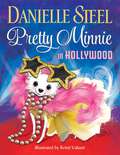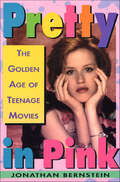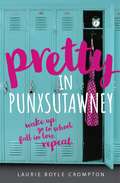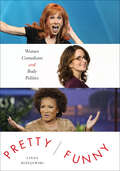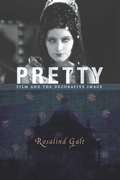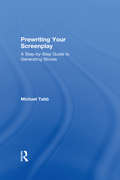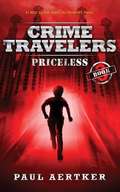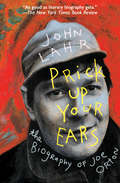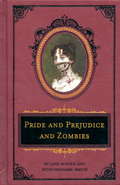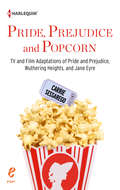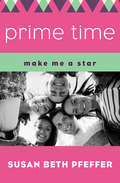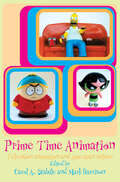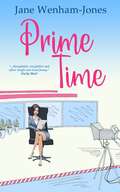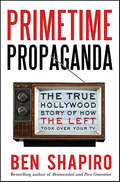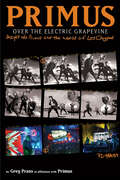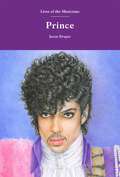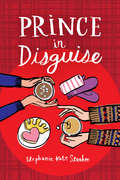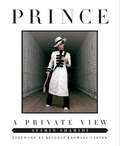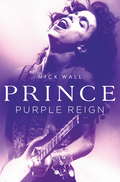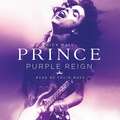- Table View
- List View
Pretty Minnie in Hollywood
by Danielle SteelFrom mega-bestselling author Danielle Steel comes an adorable new children&’s picture book featuring her very own Chihuahua! Lights, camera, adorable! Pretty Minnie is back, and it&’s her big break when she visits the glitz and glamour of Hollywood! Whether sightseeing with her best friend, taking a dip in the fancy hotel pool, or having a costume fitting at the movie studio, Minnie&’s star quality shines as she becomes everyone&’s favorite motion-picture pup. This dazzling tale will have young readers shouting, &“Hooray for Hollywood!&”&“detailed illustrations give Minnie an engaging personality that's hard to resist, and young readers will enjoy Minnie's tiny costumes and fancy accessories.&”—Kirkus&“While Steele&’s charm-filled plot features a stylish dog and her exciting journeys, it also zeroes in on the inseparable bond between a little girl and her precious pup. An endearing read for children with pets.&”—BooklistPraise for Pretty Minnie in Paris: &“Will delight young fashionistas.&”—Publishers Weekly
Pretty in Pink: The Golden Age of Teenage Movies
by Jonathan BernsteinJon Bernstein, film critic for Spin magazine critiques his favorite teen movies from the golden age of the'80s. The Brat Pack and their contemporaries have grown up, but celluloid has them flickering forever, angst-ridden, haunted, guileless, cocky, stripped to their briefs, and all dressed up "pretty in pink.""[T]his is really a fan's, not a film student's, book, and as such, a lot of fun." - Booklist
Pretty in Punxsutawney
by Laurie Boyle CromptonA Groundhog Day meets Pretty in Pink mashup from author Laurie Boyle Crompton, Pretty in Punxsutawney tells the tale of a girl willing to look beneath the surface to see people for who they really are. Andie is the type of girl who always comes up with the perfect thing to say…after it’s too late to say it. She’s addicted to romance movies—okay, all movies—but has yet to experience her first kiss. After a move to Punxsutawney, PA, for her senior year, she gets caught in an endless loop of her first day at her new school, reliving those 24 hours again and again. Convinced the curse will be broken when she meets her true love, Andie embarks on a mission: infiltrating the various cliques to find the one boy who can break the spell. What she discovers along the way is that people who seem completely different can often share the very same hopes, dreams, and hang-ups. And that even a day that has been lived over and over can be filled with unexpected connections and plenty of happy endings. X
Pretty/Funny: Women Comedians and Body Politics
by Linda Mizejewski“A totally engaging read [and] a fascinating look at the diversity and range of female comics . . . by an author who herself obviously has a sense of humor.” —Joanna E. Rapf, coeditor of The Blackwell Companion to Film ComedyWomen in comedy have traditionally been pegged as either “pretty” or “funny.” Attractive actresses with good comic timing such as Katherine Hepburn, Lucille Ball, and Julia Roberts have always gotten plum roles as the heroines of romantic comedies and television sitcoms. But fewer women who write and perform their own comedy have become stars—and often they’ve been successful because they were willing to be funny-looking, from Fanny Brice and Phyllis Diller to Lily Tomlin and Carol Burnett.Pretty/Funny focuses on Kathy Griffin, Tina Fey, Sarah Silverman, Margaret Cho, Wanda Sykes, and Ellen DeGeneres, the groundbreaking women comics who flout the pretty-versus-funny dynamic by targeting glamour, postfeminist girliness, the Hollywood A-list, and feminine whiteness with their wit and biting satire. Linda Mizejewski demonstrates that while these comics don’t all identify as feminists or take politically correct positions, their work on gender, sexuality, and race has a political impact. The first major study of women and humor in twenty years, Pretty/Funny makes a convincing case that women’s comedy has become a prime site for feminism to speak, talk back, and be contested in the twenty-first century.
Pretty/Funny: Women Comedians and Body Politics
by Linda Mizejewski“A totally engaging read [and] a fascinating look at the diversity and range of female comics . . . by an author who herself obviously has a sense of humor.” —Joanna E. Rapf, coeditor of The Blackwell Companion to Film ComedyWomen in comedy have traditionally been pegged as either “pretty” or “funny.” Attractive actresses with good comic timing such as Katherine Hepburn, Lucille Ball, and Julia Roberts have always gotten plum roles as the heroines of romantic comedies and television sitcoms. But fewer women who write and perform their own comedy have become stars—and often they’ve been successful because they were willing to be funny-looking, from Fanny Brice and Phyllis Diller to Lily Tomlin and Carol Burnett.Pretty/Funny focuses on Kathy Griffin, Tina Fey, Sarah Silverman, Margaret Cho, Wanda Sykes, and Ellen DeGeneres, the groundbreaking women comics who flout the pretty-versus-funny dynamic by targeting glamour, postfeminist girliness, the Hollywood A-list, and feminine whiteness with their wit and biting satire. Linda Mizejewski demonstrates that while these comics don’t all identify as feminists or take politically correct positions, their work on gender, sexuality, and race has a political impact. The first major study of women and humor in twenty years, Pretty/Funny makes a convincing case that women’s comedy has become a prime site for feminism to speak, talk back, and be contested in the twenty-first century.
Pretty: Film and the Decorative Image (Film and Culture Series)
by Rosalind GaltFilm culture often rejects visually rich images, treating simplicity, austerity, or even ugliness as the more provocative, political, and truly cinematic choice. Cinema may challenge traditional ideas of art, but its opposition to the decorative represents a long-standing Western aesthetic bias against feminine cosmetics, Oriental effeminacy, and primitive ornament. Inheriting this patriarchal, colonial perspective-which treats decorative style as foreign or sexually perverse-filmmakers, critics, and theorists have often denigrated colorful, picturesque, and richly patterned visions in cinema.Condemning the exclusion of the "pretty" from masculine film culture, Rosalind Galt reevaluates received ideas about the decorative impulse from early film criticism to classical and postclassical film theory. The pretty embodies lush visuality, dense mise-en-scène, painterly framing, and arabesque camera movements-styles increasingly central to world cinema. From European art cinema to the films of Wong Kar-wai and Santosh Sivan, from the experimental films of Derek Jarman to the popular pleasures of Moulin Rouge!, the pretty is a vital element of contemporary cinema, communicating distinct sexual and political identities. Inverting the logic of anti-pretty thought, Galt firmly establishes the decorative image as a queer aesthetic, uniquely able to figure cinema's perverse pleasures and cross-cultural encounters. Creating her own critical tapestry from perspectives in art theory, film theory, and philosophy, Galt reclaims prettiness as a radically transgressive style, shimmering with threads of political agency.
Prewriting Your Screenplay: A Step-by-Step Guide to Generating Stories
by Michael TabbPrewriting Your Screenplay cements all the bricks of a story’s foundations together and forms a single, organic story-growing technique, starting with a blank slate. It shows writers how to design each element so that they perfectly interlock together like pieces of a puzzle, creating a stronger story foundation that does not leave gaps and holes for readers to find. This construction process is performed one piece at a time, one character at a time, building and incorporating each element into the whole. The book provides a clear-cut set of lessons that teaches how to construct that story base around concepts as individual as the writer’s personal opinions, helping to foster an individual writer’s voice. It also features end-of-chapter exercises that offer step-by-step guidance in applying each lesson, providing screenwriters with a concrete approach to building a strong foundation for a screenplay. This is the quintessential book for all writers taking their first steps towards developing a screenplay from nothing, getting them over that first monumental hump, resulting in a well-formulated story concept that is cohesive and professional.
Priceless (Crime Travelers Spy School Mystery #3)
by Paul AertkerLucas Benes faces his greatest challenge yet when he finds a secret message from his mother hidden inside a sunken cargo container. In a near-death scuba-diving experience, Lucas and the New Resistance kids learn that Good Company CEO Siba Gunerro--along with her newest and most beautiful Curukians--is planning a massive art heist. Lucas and friends scour the Spanish countryside looking for clues. But to unravel the mysteries of both the robbery and the cryptic message, Lucas must first discover the only thing that is worth more than priceless.
Priceless Memories
by Bob Barker Digby DiehlIn front of the camera, he has been invited into the homes of millions of Americans as host of The Price Is Right, Truth or Consequences, Miss USA, Miss Universe, The Rose Parade, and many other programs and specials. Now Bob Barker shares stories of favorite contestants, episodes, celebrity encounters, and behind-the-scenes happenings. Beyond his public persona, he will open up about his personal life. From being raised on a Native American reservation by a single mother through the Great Depression and the Dust Bowl, to training as a pilot in the Navy during World War II, through his romance with the love of his life and high school sweetheart, Dorothy Jo, and his success at retirement. His support of animal rights has always been a central part of his life. Bob delves into stories of how he has taken on Hollywood and the government in his crusade, including his anti-fur stand-off with beauty pageants, his involvement in uncovering animal abuse in movies and television, and the legislation he helped to pass. He also shares personal stories of rescuing animals, from dogs to elephants. For the innumerable fans who have welcomed Bob into their homes over the last fifty years, this book will be like catching up with a dear and familiar friend who continues to lead a full and endlessly interesting life.
Prick Up Your Ears: The Biography of Joe Orton
by John LahrThis mesmerizing story of playwright and author Joe Orton&’s brief and remarkable life was named book of the year by Truman Capote and Nobel Prize–winning novelist Patrick White Told with precision and extensive detail, Prick Up Your Ears is the engrossing biography of playwright and novelist Joe Orton. Orton&’s public career spanned only three years (1964–1967), but his work made a lasting mark on the international stage. From Entertaining Mr. Sloane to his career-making Loot, Orton&’s plays often shocked, sometimes outraged, and always captivated audiences with their dark yet farcical cynicism. A rising star and undeniable talent, Orton left much undone when he was bludgeoned to death by his lover, Kenneth Halliwell, who had educated Orton and also dreamed of becoming a famous writer. Prick Up Your Ears was the basis for the distinguished 1987 film of the same name, directed by Stephen Frears, with a screenplay by Alan Bennett, and starring Gary Oldman and Vanessa Redgrave. A brilliant, page-turning examination of the dueling forces behind Orton&’s work, Prick Up Your Ears secured the playwright&’s reputation as a great twentieth-century artist.
Pride and Prejudice and Zombies: The Deluxe Heirloom Edition
by Jane Austen Seth Grahame-Smith Roberto ParadaThe New York Times Best Seller now with 30% more zombies! "It is a truth universally acknowledged that a zombie in possession of brains must be in want of more brains." So begins Pride and Prejudice and Zombies, an expanded version of the beloved Jane Austen novel featuring all-new scenes of bone-crunching zombie mayhem. This deluxe heirloom edition includes a new preface by coauthor Seth Grahame-Smith, thirteen oil painting illustrations by Roberto Parada, and a fascinating afterword by Dr. Allen Grove of Alfred University. Best of all, this limited special edition features an incredible 30 percent more zombies--via even more all-new scenes of carnage, corpse slaying, and cannibalism. Complete with a satin ribbon marker and a leatherette binding designed to endure for generations, this hardcover volume honors a masterpiece of classic zombie literature.
Pride, Prejudice and Popcorn
by Carrie SessaregoThree great love stories that started it all...Jane Eyre, Pride and Prejudice and Wuthering Heights are three of the greatest novels in English literature. Now joining them is Pride, Prejudice and Popcorn, a decidedly different take on these classics. You will laugh with delight as you learn:- The importance of thoroughly investigating your employers before accepting a job at their isolated, creepy house (Jane Eyre)- The sad fact that not every bad boy has a heart of gold (Wuthering Heights)- How to make a proper proposal-and how not to. Hint: don't insult your beloved while attempting to talk her into marriage! (Pride and Prejudice)Join blogger and romance aficionado Carrie Sessarego (smartbitchestrashybooks.com) as she takes us to the movies with Jane and Liz and Cathy. In her own unique, hilarious style she discusses the books and the various movie and TV adaptations. Your living room will be graced by heartthrobs like Timothy Dalton (twice!), Colin Firth (he shows up twice, too!), Michael Fassbender and Tom Hardy.Whether you are in the mood for serious academic discussion or lighthearted snark, whether you prefer Regency romance or Gothic passion, and whether you prefer your love stories on the screen or on the page, this book has something for you.
Pride: The Charley Pride Story
by Charley PrideCharley Pride made history when he became the first widely accepted black country music singer. Born the son of a poor farmer, Charley planned to become a Major League baseball player. In fact, he spent several years playing baseball before an injury caused him to rethink his plans. In the early 1960s, country music stars were white, and so were the producers. Few people gave Charley the time of day. With the help of Red Sovine and a producer in Nashville, Charley's first records were released. The catch was that no one knew he was black. His album cover showed a blurry photo. This is the story of how a shy man from Mississippi changed the face of country music forever while battling depression and his own fears.
Prime Time (Make Me a Star #1)
by Susan Beth PfefferThe first book in Susan Beth Pfeffer's Make Me a Star series introduces six Teenagers, each waiting for that first big break Open call! Now casting for brand-new prime time series. No experience necessary. Tenth grader Miranda Newgate is visiting Los Angeles on spring break when her cousin hears about a casting call for extras on a new TV series. Miranda goes to the audition, but ends up reading for a bigger part. Then it's back to Massachusetts, to term papers and biology projects while waiting for the call that could change her life. Stage star Molly O'Malley is a serious actress. But she could sure use the exposure from a network show that will be seen from coast to coast. Alison Blake is Miss Young America, but that doesn't give her a free pass. She has to work harder than anyone else to prove she isn't just another pretty face. Former child star T. J. Tyler is ready for his comeback. He needs the leading role to show the world he wasn't washed up at eleven. Rafe Marquez has no acting experience. But he's hot and hunky and goes after what he wants--and he wants to make it big. Bill Douglas has been on so many TV shows, this one should be a breeze. But in this business, you never know. Who will make the final cut and rise to stardom on Hard Time High?
Prime Time Animation: Television Animation and American Culture
by Carol StabileIn September 1960 a television show emerged from the mists of prehistoric time to take its place as the mother of all animated sitcoms. The Flintstones spawned dozens of imitations, just as, two decades later, The Simpsons sparked a renaissance of primetime animation. This fascinating book explores the landscape of television animation, from Bedrock to Springfield, and beyond.The contributors critically examine the key issues and questions, including: How do we explain the animation explosion of the 1960s? Why did it take nearly twenty years following the cancellation of The Flintstones for animation to find its feet again as primetime fare? In addressing these questions, as well as many others, essays examine the relation between earlier, made-for-cinema animated production (such as the Warner Looney Toons shorts) and television-based animation; the role of animation in the economies of broadcast and cable television; and the links between animation production and brand image. Contributors also examine specific programmes like The Powerpuff Girls, Daria, Ren and Stimpy and South Park from the perspective of fans, exploring fan cybercommunities, investigating how ideas of 'class' and 'taste' apply to recent TV animation, and addressing themes such as irony, alienation, and representations of the family.
Prime Time: A feel-good rom-com from the author of The Big Five O (Jane Wenham-jones Ser.)
by Jane Wenham-JonesIf you love Milly Johnson, Trisha Ashley and Catherine Alliott, you'll love Jane Wenham-Jones's deliciously entertaining novels!'Funny, realistic and full of insight' Katie Fforde'I love Jane's writing!' Jill Mansell'Feel-good' Woman & HomeLaura Meredith never imagined herself appearing on TV - she's too old, too flabby, too downright hormonal, and much too busy holding things together for her son, Stanley, after her husband left her for a younger, thinner replacement.But best friend Charlotte is a determined woman and when Laura is persuaded on to a daytime show to talk about her PMT, everything changes. Suddenly there's a camera crew tracking her every move and Laura finds herself an unlikely star. But as things hot up between her and gorgeous TV director, Cal, they're going downhill elsewhere. While Laura's caught up in a heady whirlwind of beauty treatments, makeovers and glamorous film locations, Charlotte's husband, Roger, is concealing a guilty secret, Stanley's got problems at school, work's piling up, and when Laura turns detective to protect Charlotte's marriage, things go horribly wrong. The champagne's flowing as Laura's prime time TV debut looks set to be a hit. But in every month, there's a "Day Ten" ...Don't miss Jane's other delightfully entertaining titles, filled with humour and insight: The Big Five O, Mum in the Middle, One Glass is Never Enough and Perfect Alibis are all out now!
Primetime Propaganda: The True Hollywood Story of How the Left Took Over Your TV
by Ben Shapiro“Vitally important, devastatingly thorough, and shockingly revealing…. After reading Primetime Propaganda, you’ll never watch TV the same way again.”—Mark LevinMovie critic Michael Medved calls Ben Shapiro, “One of our most refreshing and insightful voices on the popular culture, as well as a conscience for his much-maligned generation.” With Primetime Propaganda, the syndicated columnist and bestselling author of Brainwashed, Porn Generation, and Project President tells the shocking true story of how the most powerful medium of mass communication in human history became a vehicle for spreading the radical agenda of the left side of the political spectrum. Similar to what Bernard Goldberg’s Bias and A Slobbering Love Affair did for the liberal news machine, Shapiro’s Primetime Propaganda is an essential exposé of corrupting media bias, pulling back the curtain on widespread and unrepentant abuses of the Hollywood entertainment industry.
Primus, Over the Electric Grapevine: Insight into Primus and the World of Les Claypool
by Greg Prato PrimusAn oral history of the legendary band Primus, with a star-studded cast of interviewees (Tom Waits, Phish front man Trey Anastasio, etc.)It’s a wild ride that’s vividly captured in Greg Prato’s excellent oral history . . . . —Bass Player Magazine “A book about the highly strange San Franciscans Primus has been overdue for years, so Greg Prato’s excellent oral history of the band is welcome—doubly so, given that the key band members, Les Claypool, Larry Lalonde and Tim Alexander, are involved. . . . Great stuff.” —Record Collector MagazineUsually when the “alternative rock revolution” of the early 1990s is discussed, Nirvana’s Nevermind is credited as the recording that led the charge. Yet there were several earlier albums that helped pave the way, including the Pixies’s Doolittle, the Red Hot Chili Peppers’s Mother’s Milk, Jane’s Addiction’s Nothing’s Shocking, and especially Primus’s 1991 album Sailing the Seas of Cheese. This fascinating and beautifully curated oral history tells the tale of this truly one-of-a-kind band. Compiled from nearly fifty all-original interviews—including Primus members past and present and many more fellow musicians—conducted by journalist/author Greg Prato. This book is sure to appeal to longtime fans of the band, as well as admirers of the musicians interviewed for the book. Interviewees include: Tim Alexander, Trey Anastasio (Phish), Matthew Bellamy (Muse), Les Claypool, Stewart Copeland (The Police), Chuck D (Public Enemy), Kirk Hammett (Metallica), Larry LaLonde, Geddy Lee (Rush), Mickey Melchiondo (Ween), Tom Morello (Rage Against the Machine), Chad Smith (Red Hot Chili Peppers), Matt Stone (South Park), Tom Waits, and many more.
Prince (Lives of the Musicians)
by Jason DraperHis name was Prince, and he was funky. He was also inspiring, infuriating, visionary and otherworldly. Channelling contradictions in search of his own unique truth, he eventually changed his name to an unpronounceable glyph that merged the male and female symbols in an outward expression of his inner dualities. Gifted with the ability to play almost every instrument on his records, and shifting between musical styles as much as he switched-up his looks, he refused to acknowledge boundaries. Instead, he brought opposing forces together in a life-long quest to reconcile a dirty mind with a love for God. In doing so, the mini Minneapolis genius became a world-conquering icon whose towering legacy continues to shape pop culture.
Prince (Lives of the Musicians)
by Jason DraperHis name was Prince, and he was funky. He was also inspiring, infuriating, visionary and otherworldly. Channelling contradictions in search of his own unique truth, he eventually changed his name to an unpronounceable glyph that merged the male and female symbols in an outward expression of his inner dualities. Gifted with the ability to play almost every instrument on his records, and shifting between musical styles as much as he switched-up his looks, he refused to acknowledge boundaries. Instead, he brought opposing forces together in a life-long quest to reconcile a dirty mind with a love for God. In doing so, the mini Minneapolis genius became a world-conquering icon whose towering legacy continues to shape pop culture.
Prince in Disguise
by Stephanie Kate StrohmSomeday I want to live in a place where I never hear "You're Dusty's sister?" ever again. Life is real enough for Dylan-especially as the ordinary younger sister of Dusty, former Miss Mississippi and the most perfect, popular girl in Tupelo. But when Dusty wins the hand of the handsome Scottish laird-to-be Ronan on the TRC television network's crown jewel, Prince in Disguise, Dylan has to face a different kind of reality: reality TV.As the camera crew whisks them off to Scotland to film the lead-up to the wedding, camera-shy Dylan is front and center as Dusty's maid of honor. The producers are full of surprises-including old family secrets, long-lost relatives, and a hostile future mother-in-law who thinks Dusty and Dylan's family isn't good enough for her only son. At least there's Jamie, an adorably bookish groomsman who might just be the perfect antidote to all Dylan's stress . . . if she just can keep TRC from turning her into the next reality show sensation.
Prince: A Private View
by Afshin Shahidi Beyoncé Knowles-Carter<P>Featuring a foreword by Beyoncé Knowles-Carter. <P>When Prince wanted to document his One Nite Alone tour in 2002, he turned to Afshin Shahidi. Again in 2004, he went along on Prince’s record breaking Musicology Tour. Afshin met Prince in 1989 and became his cinematographer and later his photographer. He was the photographer closest to Prince for the last fifteen years of Prince’s life. <P>Afshin is the only photographer to shoot the legendary 3121 private parties in Los Angeles that became the most sought after invitations in Hollywood. <P>Prince: A Private View compiles his work into a journey through Prince's extraordinary life. With many never-before-seen photos, this is the ultimate collection of – some intimate, some candid, some in concert – shots of Prince, but all are carefully directed in the artist-as-art style that we associate with him. <P>Deep photo captions are brief, but complete stories about Prince's life at that moment - some are incisive, others are personal and even funny. <P><b>A New York Times Bestseller</b>
Prince: Purple Reign
by Mick WallThis is the powerful, detailed and enlightening biography of the iconic composer, singer, songwriter and multi-instrumentalist - the inimitable Prince.Prince was an icon. A man who defined an era of music and changed the shape of popular culture forever. There is no doubt that he was one of the most talented and influential artists of all time, and also one of the most mysterious. On 21st April 2016 the world lost its Prince; it was the day the music died.This book will open a door to Prince's world like never before - from his traumatic childhood and demonic pursuit of music as a means of escape, to his rise to superstardom, professional rivalries and marriages shrouded in tragedy, internationally bestselling music writer Mick Wall explores the historical, cultural and personal backdrop that gave rise to an artist the likes of which the world has never seen - and never will again.Mick, a lifelong Prince fan, was one of the first UK journalists to ever write about this enigmatic star, and it was his story that put Prince on the cover of Kerrang magazine in 1984 and inspired the biggest mailbag of letters the magazine has ever had. As Prince sang in '7', 'no one in the whole universe will ever compare', and this book is a shining tribute to the forever incomparable Prince.
Prince: Purple Reign
by Mick WallPrince was an icon. A man who defined an era of music and changed the shape of popular culture forever. There is no doubt that he was one of the most talented and influential artists of all time, and also one of the most mysterious. On April 21, 2016 the world lost its Prince. This book will open a door to Prince's world like never before - from his traumatic childhood and demonic pursuit of music as a means of escape, to his rise to super stardom, professional rivalries and marriages shrouded in tragedy, internationally bestselling music writer Mick Wall explores the historical, cultural and personal backdrop that gave rise to an artist the likes of which the world has never seen - and never will again. Mick, a lifelong Prince fan, was one of the first UK journalists to ever write about this enigmatic star, and it was his story that put Prince on the cover of "Kerrang "magazine in 1984 and inspired the biggest mailbag of letters the magazine has ever had. As Prince sang in '7', 'no one in the whole universe will ever compare', and this book is a shining tribute to the forever incomparable Prince.
Prince: Purple Reign
by Mick WallThis is the powerful, detailed and enlightening biography of the iconic composer, singer, songwriter and multi-instrumentalist - the inimitable Prince.Prince was an icon. A man who defined an era of music and changed the shape of popular culture forever. There is no doubt that he was one of the most talented and influential artists of all time, and also one of the most mysterious. On 21st April 2016 the world lost its Prince; it was the day the music died.This book will open a door to Prince's world like never before - from his traumatic childhood and demonic pursuit of music as a means of escape, to his rise to superstardom, professional rivalries and marriages shrouded in tragedy, internationally bestselling music writer Mick Wall explores the historical, cultural and personal backdrop that gave rise to an artist the likes of which the world has never seen - and never will again.Mick, a lifelong Prince fan, was one of the first UK journalists to ever write about this enigmatic star, and it was his story that put Prince on the cover of Kerrang magazine in 1984 and inspired the biggest mailbag of letters the magazine has ever had. As Prince sang in '7', 'no one in the whole universe will ever compare', and this book is a shining tribute to the forever incomparable Prince.Read by Colin Mace(p) 2016 Orion Publishing Group
